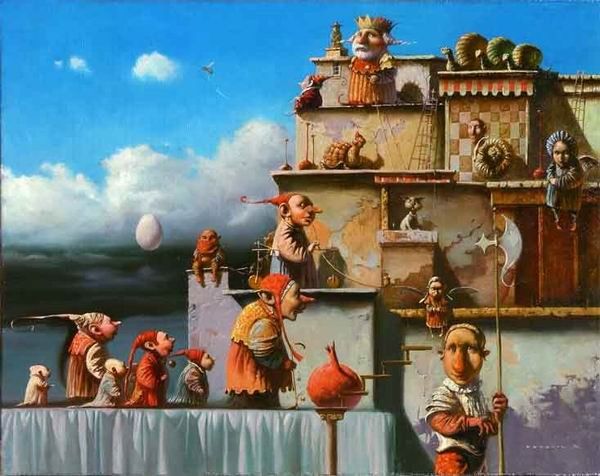
PRINCIPIA SCACCHORUM, Part 11: On Relations, the Very Fabric of (Chess) Life
PIECE RELATIONS are the ultimate constituents of chess reality as life is trying to imitate chess - use of force, violence, bloody conflicts with captures and killings of (chess)men abound.
Relationalism is a conceptual framework to understand reality (see Part 5 on the basic chess concepts) that interprets the existence, nature, and meaning of things in terms of how they connect to each other. The very fabric of reality, or a specific set of objects of interest (a family, warring chessmen, states as part of the system of international relations, set of real numbers, etc.), is made by how the members interconnect and relate in their universe.
In chess, the position of a piece on the board is only meaningful relative to its relations to other pieces. Not only chess piece relations define Space (chess space wouldn't even exist on the board without pieces exerting Force in it - imagine a lifeless empty board; see Principia Scacchorum Part 7 on Force), relations also introduce Time into the picture - any change of piece relations on the battleboard is an event of chess Time.
While this may sound all too philosophical, the practical implementation is outrageously simple. As we have seen before in Part 8, there are only four piece contacts that chessmen get into: attack, protection, restriction, interposition, plus capture.
The relational entities do have some individual properties, or characteristics (Rook <is black>, or Queen<is moving>), but the elements are not really self-standing. They are inherently relational and open in connecting with other system members in their constitution and action. Indeed, they may even be viewed as kind of properties, the most important one, that gives rise to the phenomenon of emergence, where the whole is greater than the simple sum of its parts - taken separately and independently, elements would never have such powerful effects of synergy.
Not by accident, Capablanca has said that piece coordination is the main chess principle throughout.
Here are few more examples of relation:
Rook <is attacking> Queen (an instance of mutual attack; the words between brackets describe piece relation).
Queen <is threatening to checkmate> King.
Knight <has been captured by> Pawn.
There are only two objects in each. Interposition has three pieces related. Of course, chessmen construct more complex and amazingly intricate networks of interdependencies that give chess its special, eternal appeal that we cannot counter.
The third example above with capture is special in that it represents sort of discontinuum in ever varying piece relations in time. Why? Because with one move the board relations have changed AND the balance of power is upset. We also see that the captured piece lost its entire influence on further developments. From an animated participant, it becomes just an unrelated piece of dead wood as it goes back into the box.
If we take a look at our Chess basics list, we can see that properties constitute Level 1. The piece relations are Level 2.
1) Chessmen's properties
1A) Power effect
1B) Body effect
1M) Mobility
2) Chessmen's relationships
2A) Attack
P) Protection
R) Restriction
I) Interposition
2K) Kill (capture)
3) Chessmen's collective direction (goals, purpose)
So, what is the lesson learned?
If we try to find the faults in Chess Square One defaults ("the moves first"), then it would be, #1, complete utter lack of R-E-L-A-T-I-O-N-s!!!
Art by Dominique Digeon (French, 1959), Fluide Immortele (No wonder, the piece relations on Fluide Immortele are so blurred and hazy).
Tags: relationalism, relational theory, chess ontology, piece relations, piece contacts, emergent systems, complex systems
